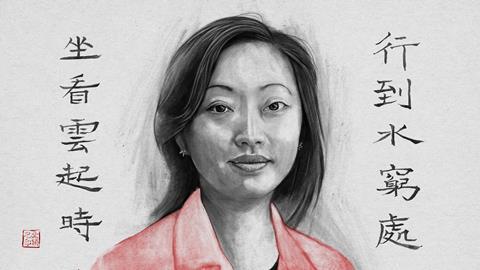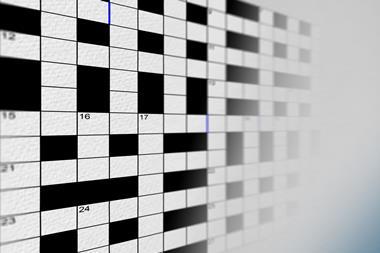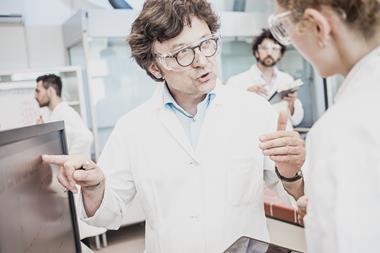The materials science pioneer on her Chinese heritage, experience as a female scientist, and the actual measure of success
Shirley Meng is the chief scientist at Argonne National Laboratory’s collaborative centre for energy storage science, and she is also a molecular engineering professor at the University of Chicago. Earlier this year the Electrochemical Society awarded Meng its Battery Division Research Award for her innovative work on interfacial science that has led to improved battery technologies. In 2022, the US Clean Energy Education and Empowerment Initiative also recognised Meng for her research on batteries, and she earned the 2020 Faraday Medal from the RSC. She was speaking to Rebecca Trager.
I was born in a very beautiful city called Hangzhou in China, it’s at the end of the Yangtze River, near Shanghai. I lived there until I was 18 years old and got a full scholarship to go to Singapore to pursue my undergraduate studies. I didn’t speak a word of English, so the first seven months I took an intense English language course so that I would be able to study there.
My childhood was very happy. My mom was an accountant and my dad was a civil engineer. I was very fortunate to be born after the Cultural Revolution, and when I was a teenager I witnessed the opening of China.
I’m an only child, a victim of China’s one-child policy. So that was a pity, my mom was not allowed to have a second child.
I always wanted to be a diplomat since I was very little. I’m very good at communication – I participated in debating teams and was quite socially active as a student union leader. But as an undergraduate at the Nanyang Technological University of Singapore, I had the opportunity to meet some fantastic professors who demonstrated to me the magic of materials science.
I still remember the first time I saw superconducting behaviours. It was one of those demonstrations that I witnessed as an undergraduate, and it was just like magic – the magnetic levitation happened in front of me.
As a female there will be obstacles to overcome in any career. But in chemistry I think we are quite lucky. When I reached MIT for my graduate studies, I was able to meet several brilliant female professors. So for my generation we’re not the only woman in the classroom or in the lab.
The stress I feel as a female scientist is mostly because people have a different set of expectations. Do you know how many times people have asked me about work-life balance? I always ask them if they would ask a guy the same question. Once during an award speech, I sincerely thanked my husband and my son, and when I came down from the stage somebody told me, ‘Guys don’t mention their families’. I remember clearly that I answered ‘I’m doing the right thing’.
If I feel very stressed, one activity I really enjoy is calligraphy. At work I use the beautiful Chinese language very little, but at leisure I practice both brush calligraphy and ink calligraphy. I write ancient Chinese poems. I couldn’t really translate them into English, but this is one of the mechanisms I use to relax myself and also remind me of my origin.
I also really enjoy art – I like high quality, aesthetically beautiful things. I live right by the Art Institute of Chicago, and I really think science is as beautiful as art. If you do good work, eventually your work will be retained in a museum, whether it’s art or science.
My first car was a red Toyota Prius. I always dreamed of having an electric car, and at that time I couldn’t afford a Tesla. I had that Prius for 11 years before I switched to a red Tesla. According to Chinese culture, red brings good luck.
I think we have to be very cautious about anti-Chinese sentiment, knowing that the country China does not equal the Chinese race. My life is pretty good already – I definitely have no complaints about salaries and promotions, for example. But I worry about my students and postdocs – that people may not be judging them by their abilities and merits but by their national identities. That is very detrimental for US competitiveness.
The biggest unanswered question for me as a material scientist is why the periodic table has 118 elements when there should be an infinite combination of materials. For some reason we can’t do reverse design – if I want a specific property in my material there should be a way to identify which elements you can put together to enable that property, but that has proven to be incredibly difficult. Artificial intelligence does open up possibilities, but the search is still on.
In the end, the actual measure of success is not the impact factor, not the h-index or how many students you have taught, it’s who will still remember what you did a hundred years from now.


















No comments yet